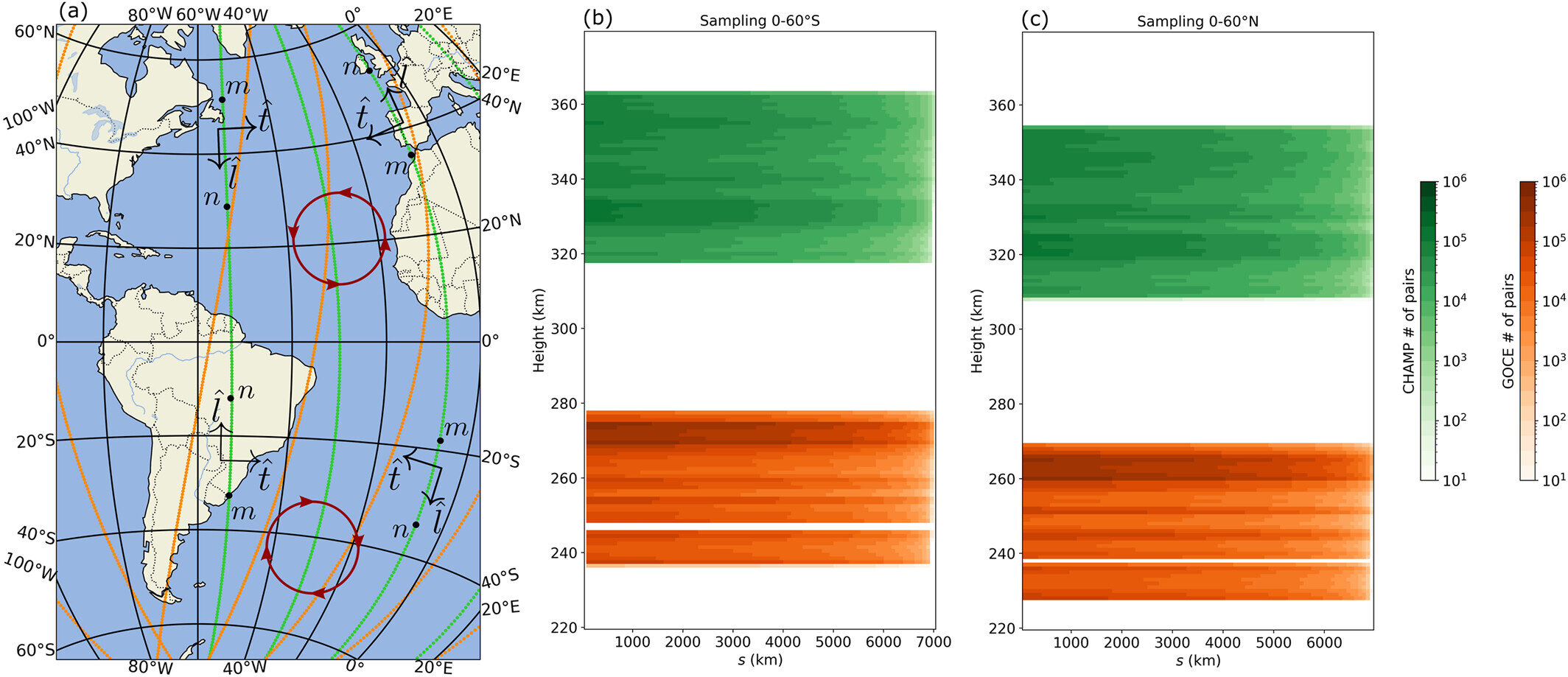Credit: Geophysical research letters (2024). DOI: 10.1029/2024GL108367
× close to
Credit: Geophysical research letters (2024). DOI: 10.1029/2024GL108367
In an article published in Geophysical research lettersResearchers have discovered that turbulence in the thermosphere exhibits the same physical laws as the wind in the lower atmosphere. Furthermore, the wind in the thermosphere rotates mainly in a cyclonic direction, in the sense that it rotates counterclockwise in the Northern Hemisphere and clockwise in the Southern Hemisphere.
The findings reveal a new unifying principle for Earth’s varied environmental systems and could potentially improve future predictions of both terrestrial and space weather.
Every now and then we tune in to the latest weather forecasts, and while they give us a good idea of our day-to-day atmospheric conditions, the research that goes into studying how Earth’s air moves is dizzyingly complex.
‘At a fundamental level we study the interplay of kinetic energy in the atmosphere at different sizes and scales. That energy usually comes in the form of wind and turbulence. Over the past decades, a tremendous amount of data has given us insight into how this happens. energy flows and dissipates and influences the weather in the troposphere, the lowest layer of the atmosphere,” explains Professor Huixin Liu of Kyushu University’s Faculty of Science, who led the research.
“My research focuses on the movements in the upper atmosphere, especially the thermosphere, where we investigate the corresponding laws that govern the dynamics and energy flow in the region.”
The thermosphere is a part of the atmosphere located about 80 to 550 km above sea level and is often called the gateway to space. It is a crucial region for space operations and is home to the International Space Station as well as most satellites. It is also where auroras are formed.
Liu worked with meteorological researcher Dr. Facundo L. Poblet of the Leibniz Institute for Atmospheric Physics at the University of Rostock, whose work focuses on the dynamics and turbulence in the lower atmosphere below an altitude of 100 km.
“My research concerns space physics and I wanted to see if we could apply his meteorological methods to my research domain,” Liu explains.
The team analyzed thermospheric wind data from two satellites, the Challenging Minisatellite Payload (CHAMP) and the Gravity Field and Steady State Ocean Circulation Explorer (GOCE). Using the data, the team calculated the third-order structure function of the wind, a statistical quantity that provides information about the underlying turbulence. To their surprise, they discovered that the thermosphere exhibits a similar scaling law to that of the lower atmosphere.
‘This means that both the thermosphere and the troposphere – despite having drastically different atmospheric compositions and dynamics – follow the same physical laws. The way turbulence moves, forms and dissipates in these two regions is very similar,” Liu continues.
Despite remarkable progress in understanding the thermosphere, the intricate interplay of turbulence has remained largely elusive, and the team is pleased that their findings shed new light on this understudied aspect of near-space dynamics.
“As with atmospheric weather forecasting, understanding the energy distributions in the thermosphere is critical to advancing our understanding of space dynamics,” Liu concludes. “We hope these findings can be used to improve space weather forecasting and ensure the continued functionality and safety of satellite-based technologies that are essential to everyday life.”
More information:
Facundo L. Poblet et al., Third-order structure functions of zonal winds in the thermosphere using CHAMP and GOCE observations, Geophysical research letters (2024). DOI: 10.1029/2024GL108367
Magazine information:
Geophysical research letters
